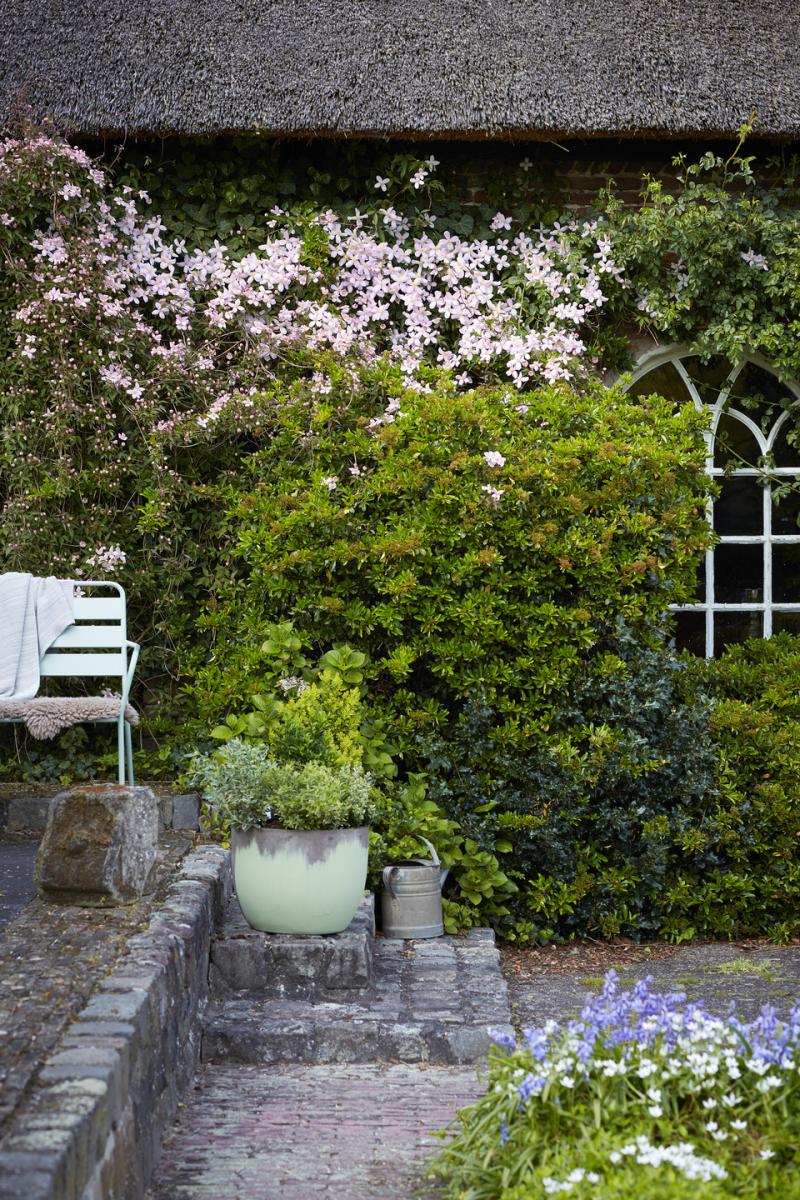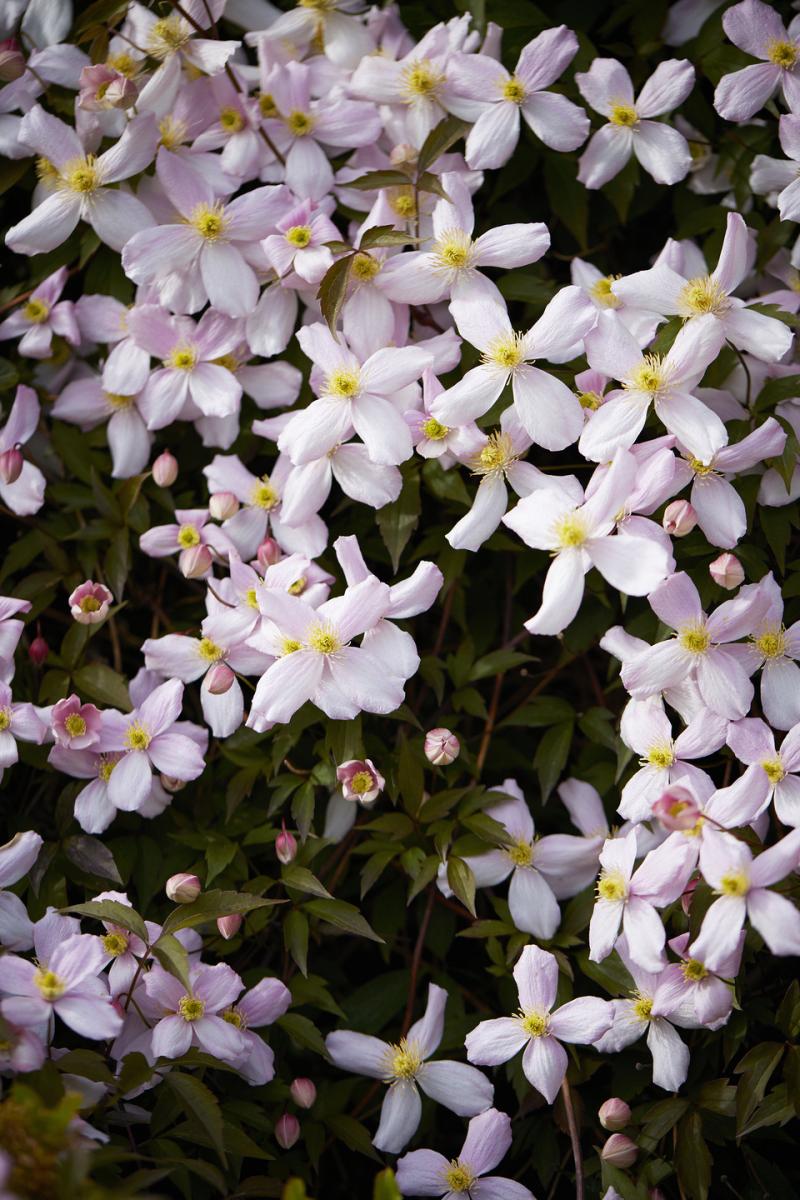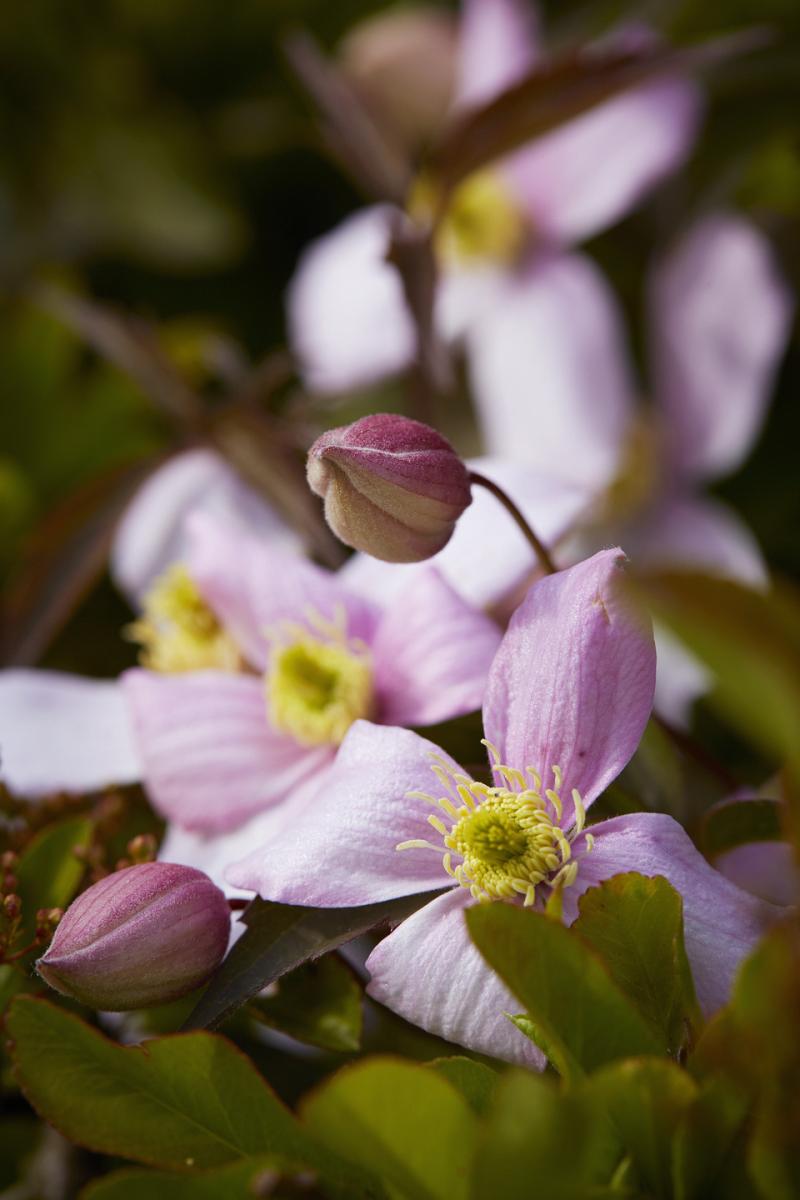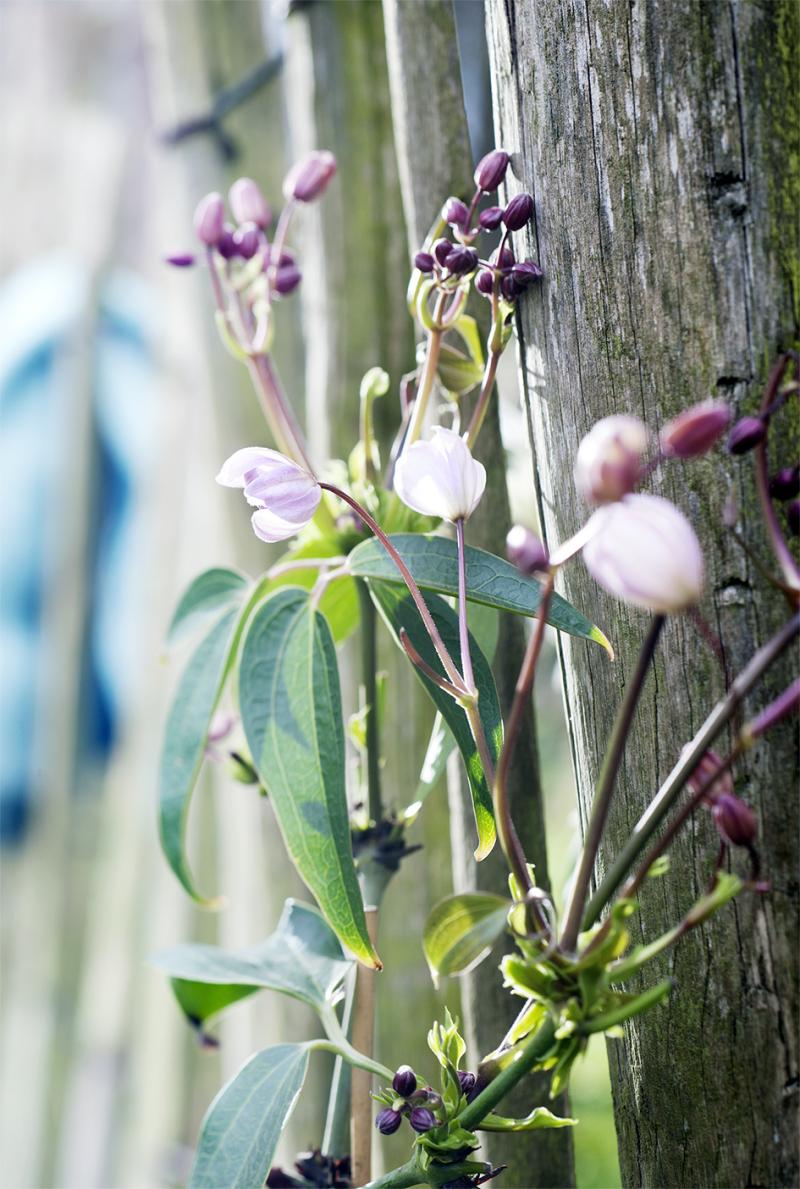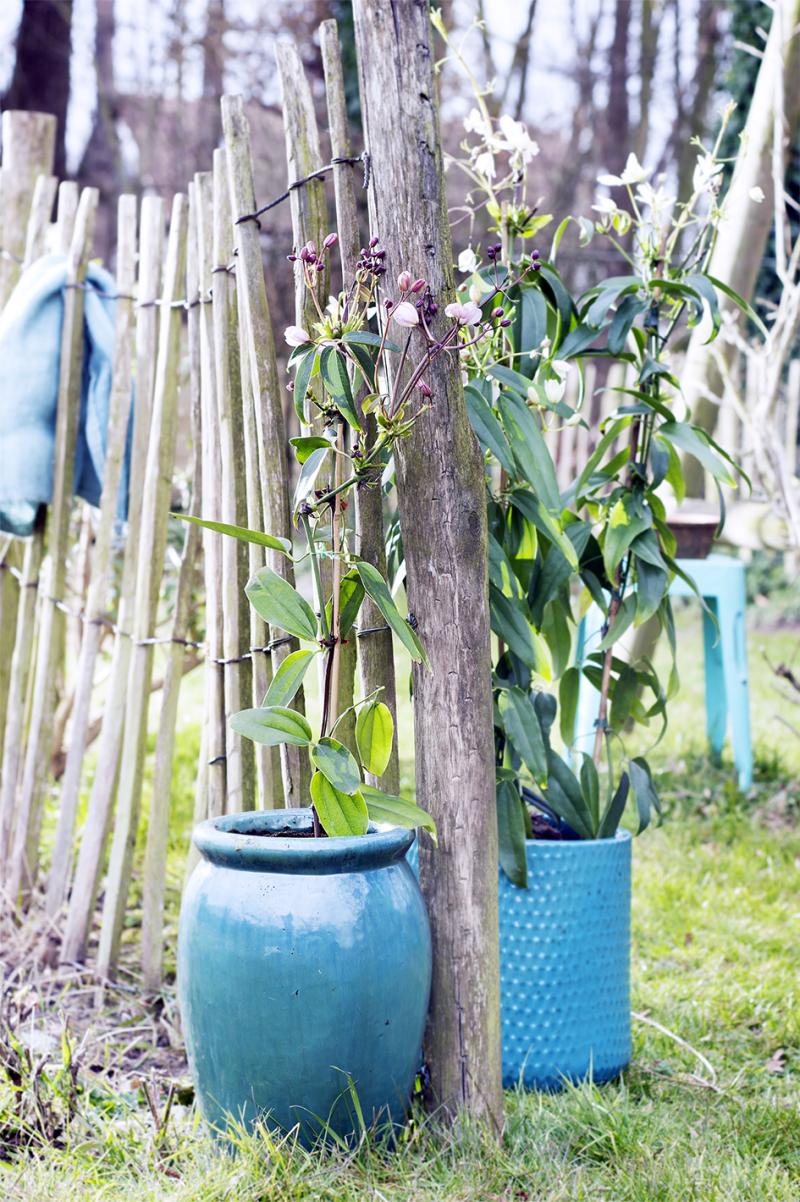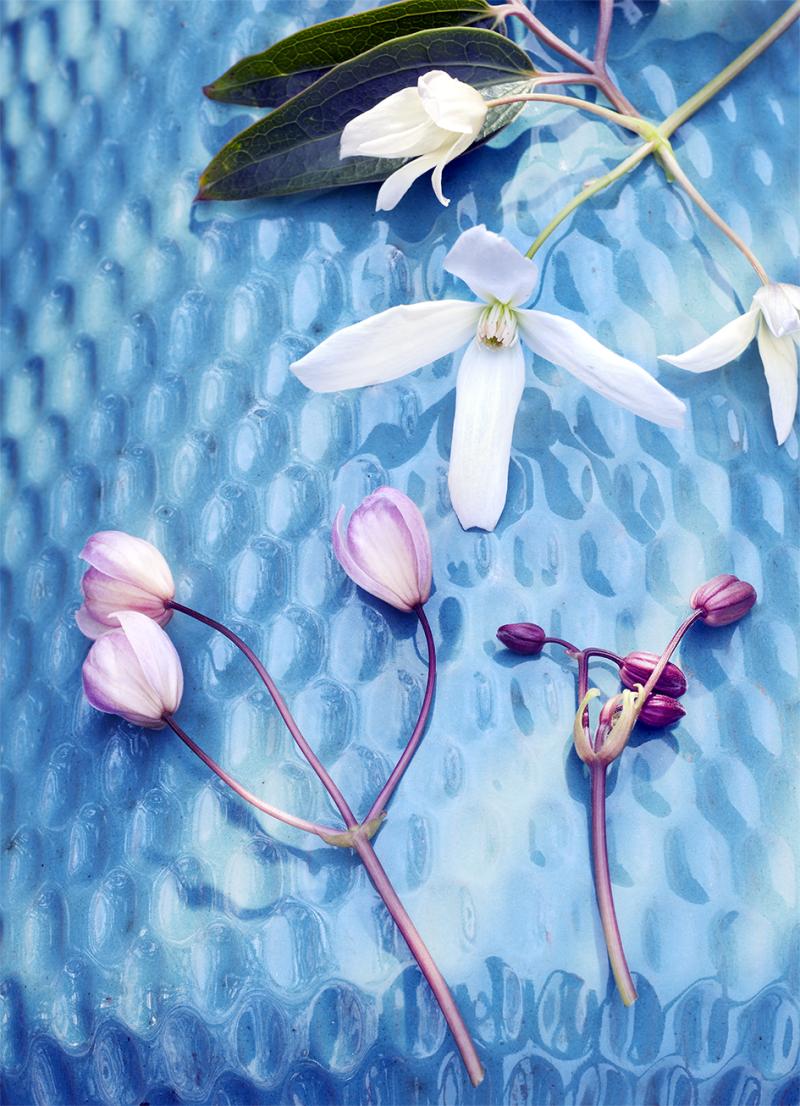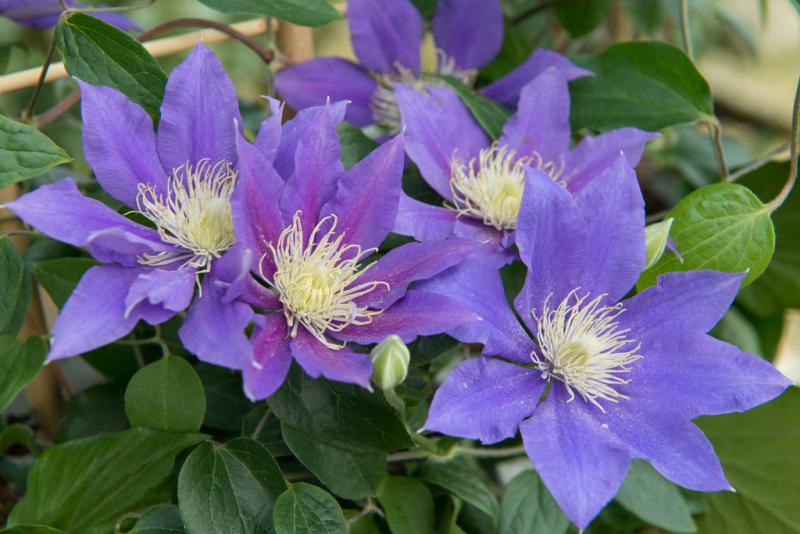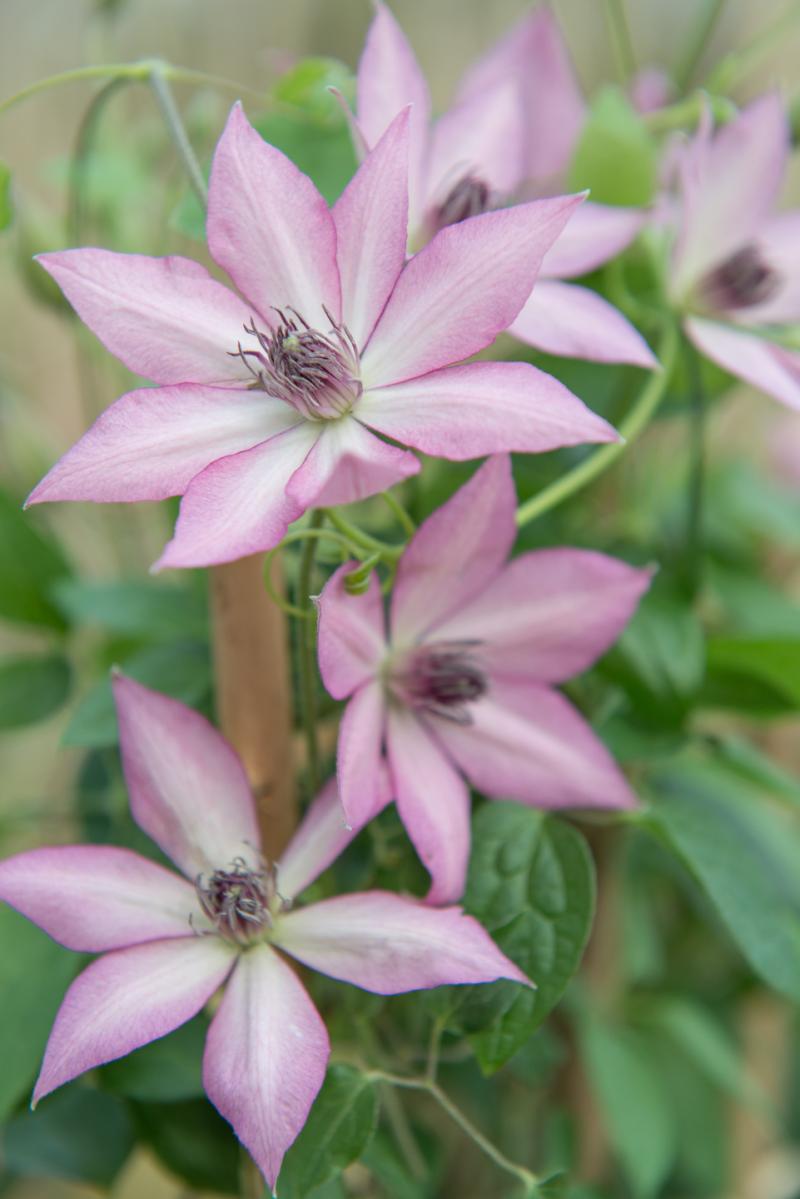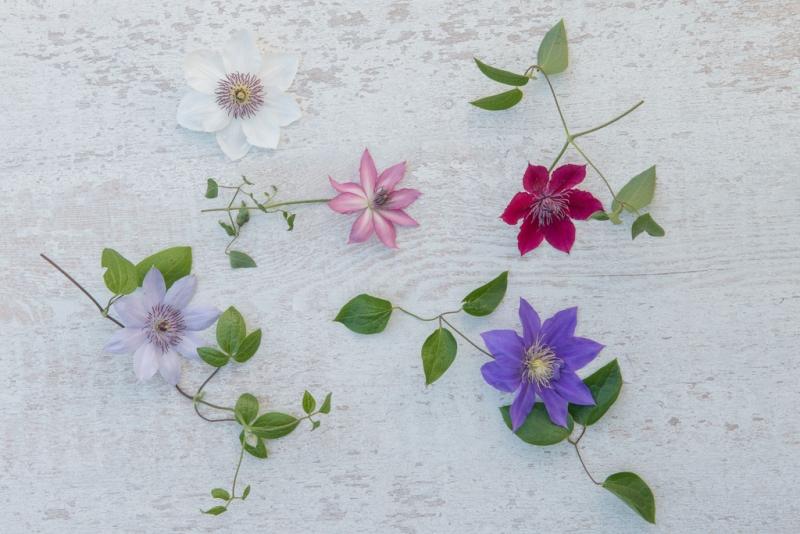Garden Plant of the Month for April: Clematis
Hardy lavishly blooming climber
Climbing and trailing plants are very popular. Smaller gardens are sometimes short of space, because we want to sit in the sun and enjoy a barbecue. A plant that grows upwards is then the ideal solution, since it only covers a small surface area whilst providing plenty of colour. Clematis - the best-known climber amongst the vertical plants - is ideal for this. If you have a wall, shed or pergola, Clematis will provide good coverage and offer a beautifully coloured display for a long time. Clematis occurs in hundreds of varieties and types. It’s a climber which is very hardy, and sometimes also bears beautiful seed fluff after flowering. By planting in April, you can enjoy the plant all summer long.
Clematis: Many colours, flower shapes, flower sizes
Clematis is native to many parts of the world, including Europe. The plant climbs using twisting leaf stems. Those leaf stems are exceptionally long, and start looking for support as soon as they have any strength. The plants can be planted both in the soil and in containers. Ensure that the plant has a ‘climbing aid’ and can fasten on to something - a pergola, wooden stake or trellis made of stretched wires. Walls, sheds, trees or fences are perfect climbing aids for Clematis.
Clematis flowers very profusely. The variety of colours and flower shapes is almost overwhelming. Blue, pink, purple and white are particularly common, but bi-coloured, single and double flowered varieties are becoming increasingly popular. The flower’s size can range from 2 to 24 cm. The visible flower is actually the calyx, and is beautifully coloured. The earliest Clematis flowers in March-April, but most varieties flower from May to the end of September. April is the ideal month for planting Clematis in the garden. There are various collections, ranging from early-flowering and evergreen cultivars through to small-flowered or large-flowered varieties which don’t bloom until later in the summer and lose their leaves in winter.
Caring for Clematis
Clematis’ roots like to be cool. It is advisable not to place the plant’s base in direct sunlight. The plants are used to the company of other woody plants whose fallen leaves ensure that the soil contains sufficient humus. Water Clematis regularly so that the soil never dries out, particularly if it’s planted in a pot or container. Clematis needs extra food during the growing period from March to May. A universal fertiliser such as granulated dried cow manure is very suitable, and also improves the soil structure. There is no need to feed Clematis during the flowering period itself. Some training is required to ensure that the plant grows in the right direction.
Clematis pruning tips
It’s not difficult to prune Clematis, but it’s harder to identify the correct time, which varies according to the cultivar. The best idea is to prune after flowering. For varieties that flower in May, that would be at the start of the summer, while for varieties that flower in summer it would be at the end of the winter. If Clematis is not pruned, you end up with a tangle of bare branches, and the flowers will be constantly higher up the plant. Regular pruning is therefore important to ensure a Clematis which remains fresh and flowers beautifully. So don’t be afraid to give the plant a vigorous haircut. Should this turn out to be at the wrong time of year, the plant will just not flower or produce fewer flowers for a year.
POS-material Clematis:
You can download the poster and banner by using the links below:
- Poster Clematis
- Banner Clematis
More information about Clematis and other garden plants can be found at Thejoyofplants.co.uk.
Garden Plant of the Month
Clematis is in the spotlight in April as the Garden Plant of the Month. ‘Garden Plant of the Month’ is an initiative by Thejoyofplants.co.uk. Growers and horticultural specialists from the floriculture sector select a garden plant every month at the request of Thejoyofplants.co.uk in order to inspire and enthuse. Because a garden isn’t a garden without plants.

